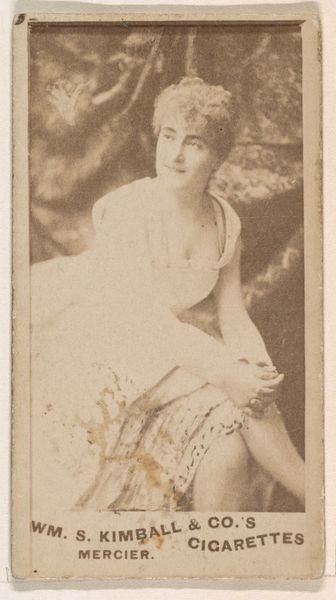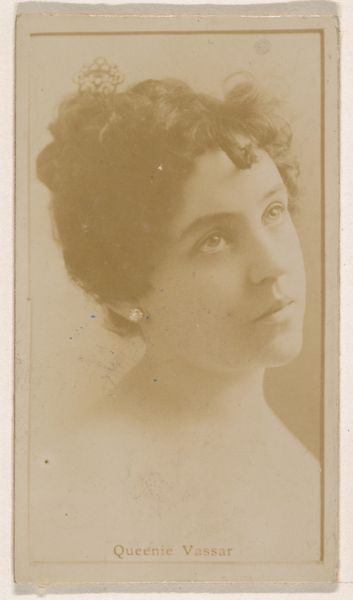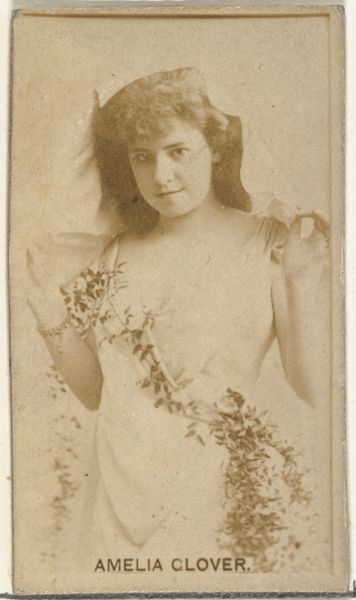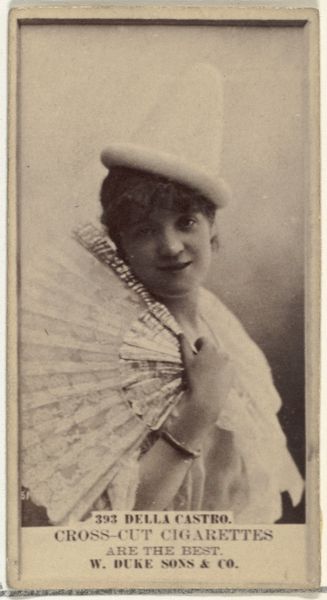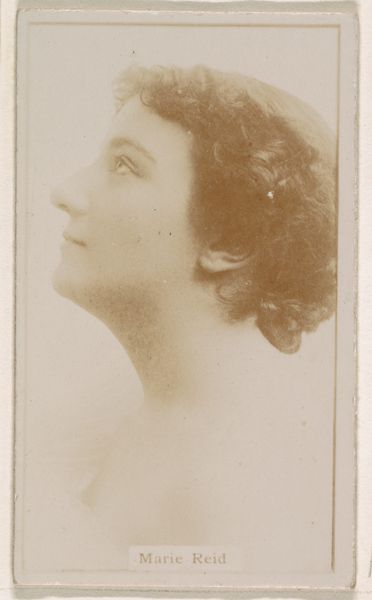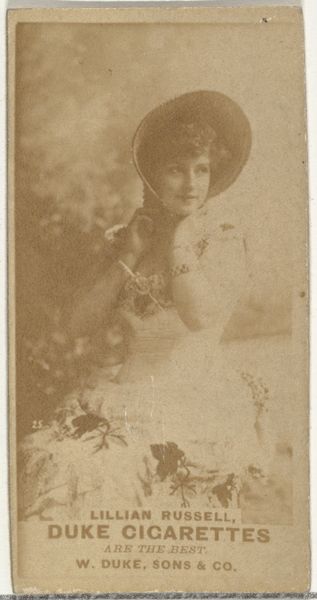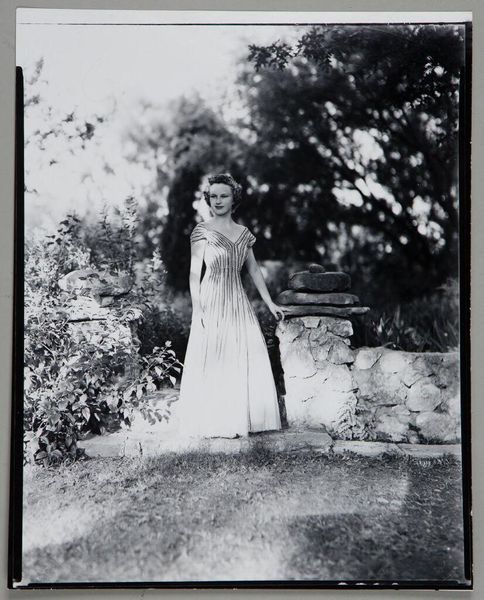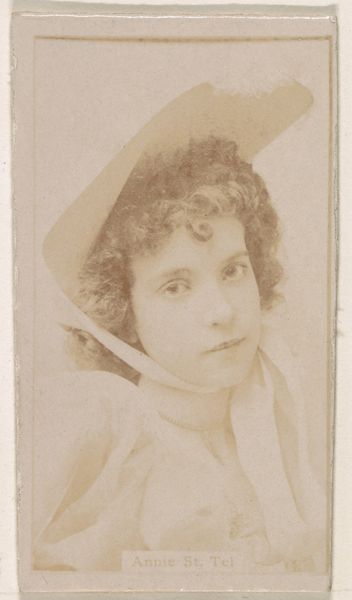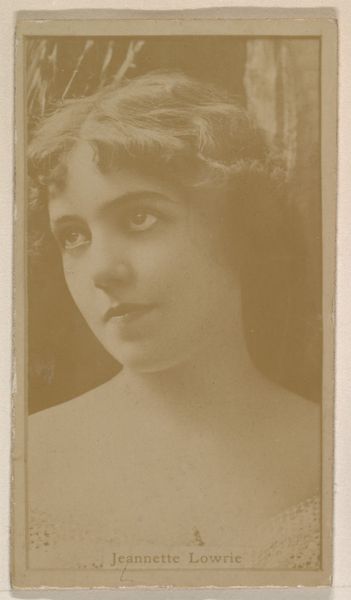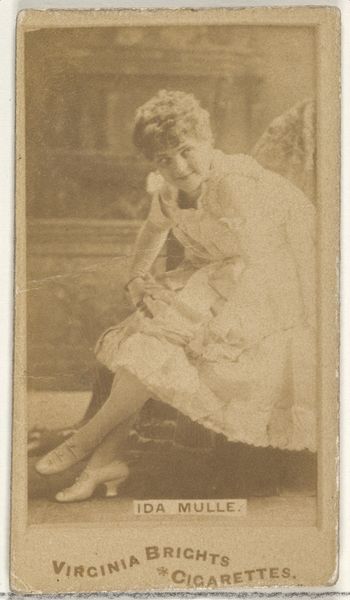
Dimensions: 13 7/16 x 10 7/16 in. (34.13 x 26.51 cm) (image, sheet)
Copyright: No Copyright - United States
Curator: This gelatin-silver print, created in 1919, is titled "Marie Ruzicka Mainelli." The artist behind the lens was Drahomir Josef Ruzicka, and it resides here at the Minneapolis Institute of Art. I must say, the mood it evokes is quite gentle. Editor: Yes, a very soft, almost ethereal feeling. The woman's direct gaze combined with the diffuse lighting gives her a slightly melancholic aura. And that parasol, so perfectly round against the blurred landscape. Curator: Absolutely. That parasol speaks to more than just protection from the sun, doesn't it? In photography from this period, the parasol operates almost as an emblem. A symbol of refinement, social status, and even a certain detachment from the grit and grime of modernity. Think about how this intersects with ideas about femininity and representation in the early 20th century. Editor: I see that. The flowers she holds, seemingly wildflowers, create an interesting tension. It softens the reading of the parasol. While there is formality implied, there’s also an association with natural beauty, with an almost Arcadian existence. There’s a yearning in this work that exceeds simple portraiture. Curator: I think you're on to something there. The ambiguity is really where the power lies. The gelatin-silver print lends itself so well to that effect, allowing for incredible tonal range and a dreamy quality. What's interesting too is how the composition deliberately places Marie slightly off-center, amidst the overgrowth, creating this push-and-pull of her positioning as an object to observe, but within this context that blurs the lines of civilized or "pure" feminine virtue. Editor: Exactly! She's surrounded by nature, yet she carries this clear signifier of culture and controlled beauty. It begs questions: Is she retreating from something? Seeking solace? And what did it mean for Ruzicka, the artist, to capture her in this way? What aspects of his wife was he emphasizing in this outdoor studio portrait? The photograph certainly functions as an intentional representation. Curator: Well, thank you, that brings the work into greater relief. Seeing the world through symbols and objects can alter a viewing experience altogether. Editor: Likewise, I’ll never look at a parasol the same way again! Considering art as a political and cultural phenomenon is so essential.
Comments
No comments
Be the first to comment and join the conversation on the ultimate creative platform.


